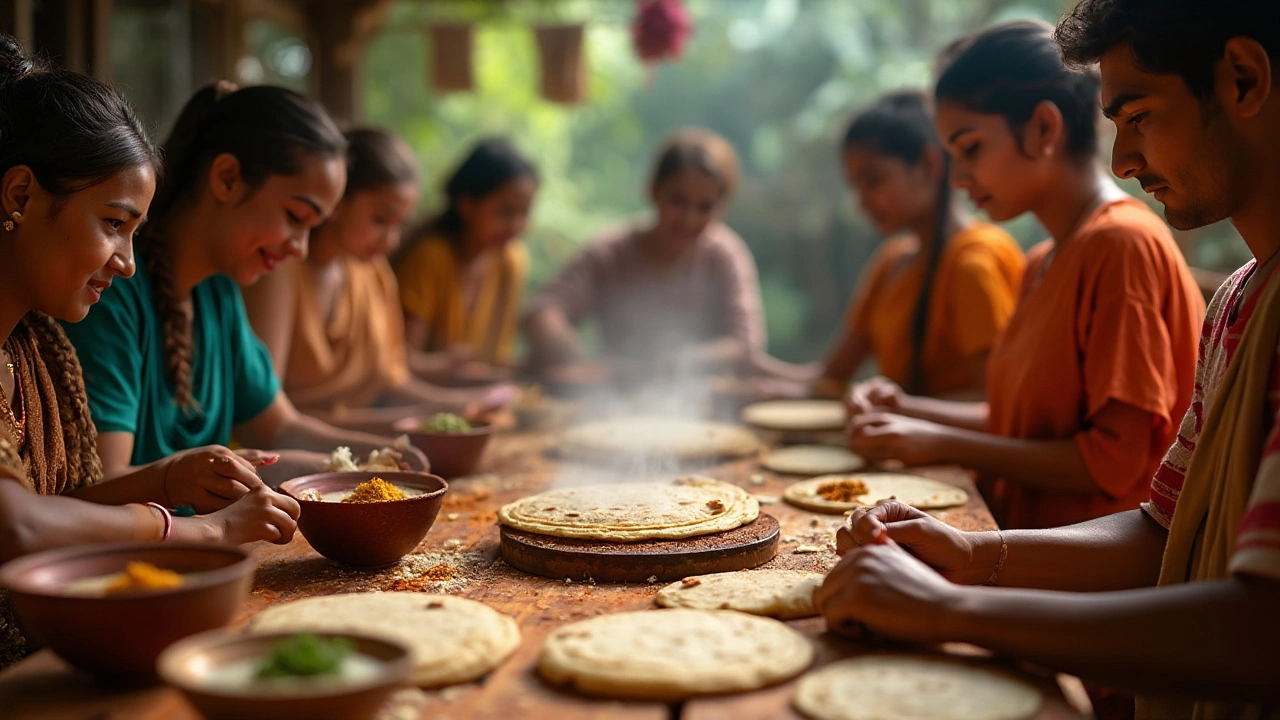Roti Shape: Simple Tips for Perfect Flatbreads
Got a stack of dough and wondering why your rotis end up as ovals or squares? It’s all about a few easy habits. Follow these steps and you’ll get round, soft rotis that puff up nicely without any fancy equipment.
Choose the Right Flour and Prep the Dough
The first factor is flour. All‑purpose flour works, but a mix of whole wheat atta and a little soft wheat flour keeps the dough supple. Aim for a 70/30 split – 70% atta, 30% soft flour – and add a pinch of salt for flavor. Mix the flour with lukewarm water just enough to form a smooth, non‑sticky ball. Let the dough rest for at least 15 minutes; that relaxing time lets the gluten settle, making it easier to roll.
While the dough rests, keep a small bowl of water nearby. Lightly wetting your hands prevents the dough from sticking to your palm, which means smoother rolling and fewer tears.
Step‑by‑Step Shaping Guide
1. Portion it out. Take a golf‑ball‑sized piece and roll it into a ball. Press it flat with your palms – you’ll see a small disc appear.
2. Dust and roll. Sprinkle a little flour on the work surface and on the dough. Using a rolling pin, start from the center and roll outward in a gentle spiral motion. Keep the pressure even; too much pressure makes the roti thick, too little leaves gaps.
3. Watch the size. Aim for a 6‑inch circle. If the edges start to lift, lift the roti and dust the top side, then continue rolling. The goal is a thin, uniform circle – it cooks fast and puffs up nicely.
4. Rest before cooking. Let the rolled roti sit for 30 seconds. This short pause lets the gluten relax a bit more, which helps it puff when it hits the hot pan.
5. Cook correctly. Heat a dry, medium‑hot tawa or skillet. Place the roti on the surface; you’ll hear a gentle sizzle. Cook 30‑40 seconds until you see bubbles forming, then flip. Cook the other side for another 30 seconds, press gently with a cloth or spatula – the roti should puff up. If it doesn’t, it might be too thick or the pan isn’t hot enough.
6. Finish with a quick flame. For that classic charred spot, you can hold the roti with tongs and place it directly over an open flame for a second. It adds flavor and that authentic look.
Extra tips: If your roti sticks to the rolling pin, dust both surfaces lightly. If you notice cracks, the dough might be too dry – add a few drops of water and knead briefly.
Getting the shape right takes a bit of practice, but once you’ve nailed the rolling motion, you’ll make round rotis in seconds. Keep the process simple, use the right flour mix, and give the dough a short rest. That’s all you need for a perfect roti shape every time.
The Myth of the Perfect Round Roti: Embrace Imperfections in Roti Making
Why do we strive for perfect roundness in rotis, and does it truly matter? As home cooks from different cultural backgrounds explore their culinary heritage, the pursuit of a round roti often overshadows the actual essence of this staple. While the circular shape might carry a certain aesthetic appeal and tradition, the secret to a good roti lies more in its texture and taste. Many practical tips can help you create delicious rotis, regardless of their form.
